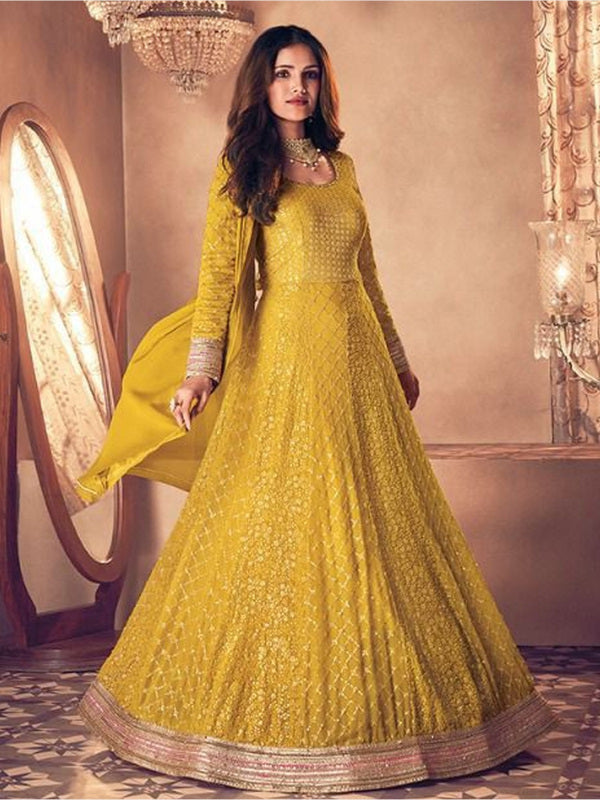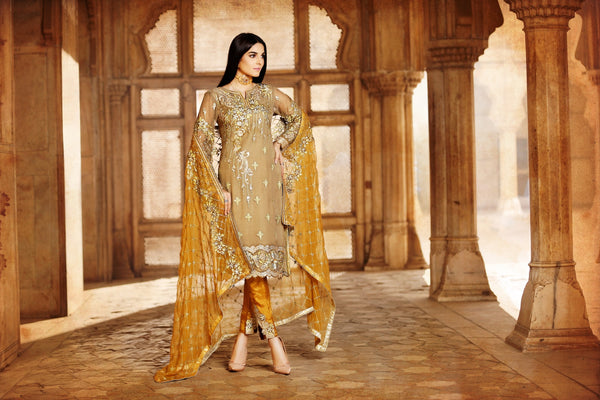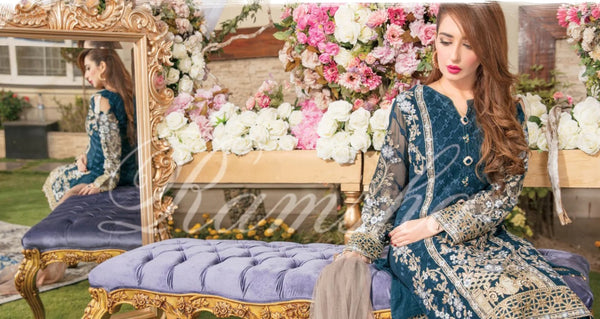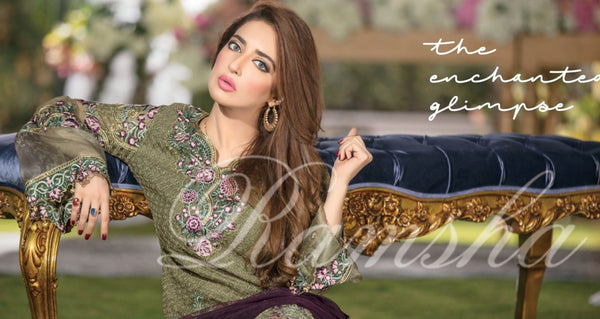What is an Indian Dress?
What do you think of when you hear Indian dresses?
For most people, the sarees, lehenga, salwar kameez, and others come to mind. The Indian dress culture has been influenced by its long history, different eras and civilizations, and the thousands of different ethnic groups that make up the fabric of this incredibly diverse nation.

Straight Style Designer Indian Dress for Women
The dresses in India showcase the traditional fashion taste and philosophy of the Indian people. Fashion here is undoubtedly one of the major cultural heritage of the Indian people. In this post, however, we’ll shed the spotlight on these diverse Indian dresses that dominate the Indian fashion scene.
Indian Dresses: Background, History, & Origin
Several eras and civilizations have influenced the dress scene in India. The Indus Valley Civilization, coupled with the Mughal empire era appears to be the two most culturally significant eras as far as dresses and fashion are concerned in India.
The first recorded history of clothing in India is usually traced back to the Indus Civilization era of the 5th millennium BC. According to historians, this was when cotton began to be woven, spun, and dyed across India. Perhaps because it was the oldest, the cotton industry in India is highly developed and many of the conventional cotton-weaving traditions still exist today.
While the saree can be traced to the Indus Valley Civilization, many other garments that make up the Indian fashion scene such as the salwar kameez and Anarkali dresses can be traced back to the rule of the Mughal Empire kings.

Indian Dress for Women in Yellow Color
Together with the saree, the lehenga, salwar kameez, and Anarkali dresses today are the most popular dresses in the wardrobes of most women in the Indian subcontinent. These dresses have undergone several years of modifications and evolution as the entire Indian fashion scene has over the years taken and adapted several elements of both Western and European fashion. While western dresses are now commonplace in everyday fashion for Indian women, these champions of traditional fashion are still very popular across India.
Dress Making In India (Process, Fabric, Etc)
Ever wondered how Indian dresses are made?
Indian-made dresses sport vibrant colors, are beautifully unique and cherished across the world. While modernization and civilization have brought several changes to the dress manufacturing process in India, some artisans in India are still fond of manufacturing dresses by hand, using pure fabric materials.
● Fabric types
Today’s Indian dresses are a mix of both age-long traditions and modern best practices. These dresses are made from a range of fabric products that include silk, cotton, chiffon, georgette, velvet, etc. These dresses, while featuring skillfully made embroidery and embellishments also come in diverse styles and designs.
Along with the diverse fabric types, Indian dresses also come in diverse prints and colors made from natural dyes. Two main types of dyes are used in making Indian dresses; plant or vegetable dyes as well as reactive dye.
● Dye types
The Kalamkari process of dyeing fabrics with plant or vegetable dyes usually involves natural substances like fruits, vegetables, leaves, etc. Yellow dyes are usually produced from turmeric or boiling pomegranates in water. Other dyes can then be created by mixing a few basic colors together to form another color.
Reactive dyes are a little different from plant dyes. Unlike plant dyes, reactive dyes have a chemical reaction on the fabrics they are used on by changing the fabric on a molecular level. The dye becomes a permanent part of the fabric, protected from fading or bleeding out after a while.
● Embroidery and embellishments
Embroidery and embellishments also happen to be some of the most significant distinguishing features of Indian dresses. Indian dresses often sport beautiful motifs, patterns, designs, and embroidery work of all kinds.
Along with strands of threads, Indian dresses can often be done using beads, pearls, crystals, sequins, etc. Indian dresses’ embroidery works are distinguished by certain factors such as the base fabric as well as whether the embroidery is stitched on the surface or through the base fabric. While different regions and states of India have different types of embroideries associated with their dresses, the most common embroidery works include zari work (also known as zardosi embroidery), phulkari, Kantha, kashida, and chikankari, among others.
Indian Dress Styles & Types
The Indian fashion scene is filled with dresses of all kinds and styles - just what you’ll expect in a country with a vast population and its ethnically diverse composition.

Salwar Suit Type Indian Dress
That said, here are some of the most popular dress types in India;
- Lehenga: A 3-piece garment also known as the lehenga choli or ghagra choli, the lehenga comprises of a pleated long skirt, a cropped choli, and a dupatta. It’s a favorite among Indian girls and women till today and usually a common sight at weddings and lots of other formal occasions.
- Saree: A strip of an unstitched piece of fabric, usually draped over the body and worn by both young teenage girls and older women across India, Pakistan, and other parts of South Asia. The saree is usually paired with a blouse and underskirt.
- Salwar kameez: The combination of a salwar top, the kameez bottom, and dupatta is loved by Indian girls and women being one of the most comfortable attires of this region.
- Anarkali: This dress is comprised of a long frock style kurta usually paired with tight-fitting churidar pants. The Anarkali dates back to the Mughal empire era and is today one of the most gracious ethnic Indian dresses available.
- Churidar: Churidar trousers are usually long trousers with the length usually exceeding the leg. The trouser is always tight-fitting with folds at the ankle that look like bangles (churi), hence, the name churidar. This is a common part of the Indian women’s dress and can usually be paired with Kurtis, both short and long length types.
Latest Indian Fashion Trends
From sarees to lehengas, salwar kameez, anarkalis, and more, there are hundreds of trends dominating the fashion scene in India. Here are some we believe will be popular this year;
- Multicolor sarees; from multicolor fabric to multicolor stones, and more, Indian designers are making more colorful sarees now than ever!
- Sarees with sequin work: colorful sequin works are popping up everywhere on more sarees and lehengas and they’ll be popular throughout 2022.
- Thin borders/borderless sarees; while thin borders are gradually being chosen in place of broader ones, some sarees are also doing away completely with border designs and they’re beautiful!
- Bridal lehengas; more brides are tying the knot in beautiful bridal lehengas in bright red colors as well as blue, maroon, and pastel shades!
- Lehengas with preattached dupattas; new dupatta trends are popping up everywhere. Among these are lehengas with preattached dupattas. Others include belted dupattas and dupattas with contrasting designs and colors.
- Layered lehenga dresses; layered lehenga suits are becoming more popular with some usually featuring a heavily embroidered top over a plain layer.
- Cropped salwar pants
- Patra and gota Patti work
- Ankle-length Anarkali suits

Indian Dress as Salwar Kameez for Women
These trends dictated the tune in 2021. There’s no doubt they’ll still be as popular in the coming years.
How/When To Wear An Indian Dress
There are Indian dresses for every occasion.
Lehengas are a popular choice for Indian brides as are sarees and Anarkali suits. In the case of the saree, one would need to master the art of draping a saree which will be needed to look good in your saree. The lehenga can always be paired with a Kurti and jacket, peplum tops, jacket and crop tops, etc. As much as lehengas are some of the most popular Indian dresses for weddings, they’re also worn to other occasions and parties, from birthday parties to sangeets, etc.

Indian Dress With Embroidery for Women in Red Color
Why The World Loves Indian Dresses
Ethnic Indian dresses are loved all over the world and the reasons are not far-fetched.
First, the Indian nation and people values traditions so much and the fashion here is one of the strongest aspects of culture for the people. That said, these dresses themselves are beautiful, colorful, and versatile, making them easy to fall in love with.

A Simple & Typical Indian Dress
The Indian fashion scene offers a variety of different kinds of dresses.
You can always find anything for any occasion at any time you need it. These dresses are also very versatile and depending on their style and design, might be able to fit into different events and occasions. Ethnic Indian dresses are simply timeless. These dresses tell the story of India with beautiful colors, patterns, motifs, and designs that never get old. This is why these dresses are loved and appreciated not just in India but also outside the country.






